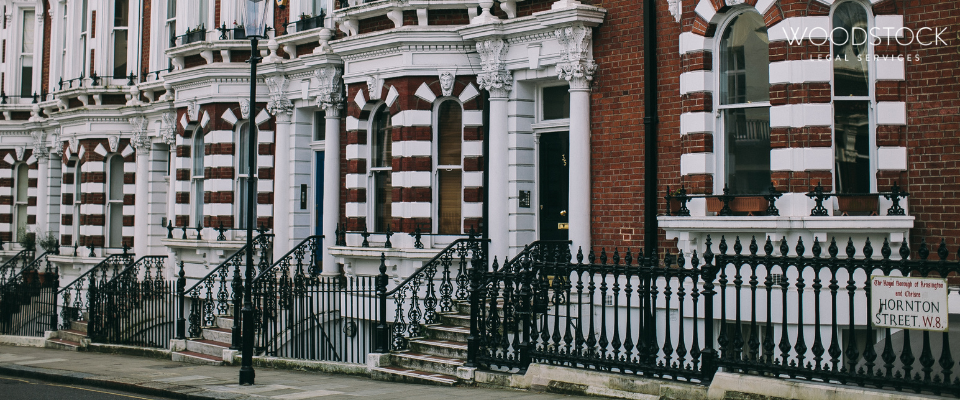The end of the forfeiture moratorium is nigh (well, 26 March 2022) – what options do Landlords now have?
For those who have been eagerly watching and waiting for the implementation of the Commercial Rent (Coronavirus) Act (the “Act”) and the lifting of the forfeiture moratorium, D Day is rapidly approaching.
We’re all aware that the Act will introduce a new arbitration scheme to deal with protected rent – but what about arrears that fall outside of the ringfenced protected debt?
We’ve been acting for a lot of Landlords with precisely this type of arrears and everyone’s keen to understand what their options are.
Lifting of restrictions
On 26 March 2022 exercising rights to forfeit will, once again, be an option for landlords. There are no COVID-related restrictions on exercising the Commercial Rent Arrears Recovery (“CRAR”) procedure as the blanket moratorium on those enforcement options brought in originally by the Coronavirus Act 2020 (the “CA 2020”) will have lifted on 25 March 2022.
The restrictions on presenting winding-up petitions will also be lifted on 31 March 2022, giving Landlords additional options.
It‘s anticipated that the Act will be in force by 25 March 2022 and therefore the above restrictions, and others (including issuing debt proceedings and drawing down against rent deposits), will apply where the debt is considered to satisfy the Protected Rent Debt (“PRD”) definition under the Act. This broadly relates to the period 21 March 2020 - 18 July 2021 in England. The restrictions introduced by the Act will apply during a moratorium period which ends either 6 months from the Act coming into force or, where the matter is referred to arbitration, on the conclusion of the arbitration (the “Moratorium Period”).
What can landlords do now in relation to non-PRD?
The landlord now has the choice of taking action to recover the arrears and/or terminate the tenancy under any forfeiture provision.
Forfeiture options:
The normal restrictions on forfeiture will apply, i.e. the landlord will need to ensure that it does not waive the right to forfeit when the remedy becomes available to it again.
The CA 2020 stated at section 82(2) that no action by a landlord during the blanket moratorium, other than an express waiver in writing, amounts to waiver of the right to forfeit in relation to the rent arrears. However, anything done after 25 March (incidentally the March quarter day) could act as a waiver. One could adopt a belt-and-braces approach and take no action until the right to forfeit arises in respect of the March quarter and then forfeit (when this occurs will depend on the wording of the forfeiture clause in the lease).
Where a tenant is in arrears and part of those arrears are PRD, the landlord will need to ensure it is very clear upon what debt it is exercising its right to forfeit.
CRAR options:
Although CRAR has technically been available to landlords throughout the pandemic, since 24 June 2021 the minimum amount has been a sum equal to 554 days’ rent (the equivalent of rent accrued since the start of the pandemic up to the September 2021 quarter). Thankfully, from 25 March 2022, the minimum outstanding amounts required before a landlord can exercise CRAR reverts back to the equivalent of 7 days’ rent. This makes CRAR once again a feasible option for consideration.
It also means that landlords are able to serve a notice pursuant to Section 81 of the Tribunal, Courts and Enforcement Act 2007 on the subtenant, requiring them to pay its rent directly to the superior landlord rather than to its own landlord until the immediate tenant’s arrears have been satisfied. The restrictions had prevented this from being utilised, but now will also be lifted.
Just beware however that exercising CRAR will waive a landlord’s right to forfeit in relation to pre-existing breaches.
Court proceedings:
The Act contains provisions which apply a stay to debt proceedings issued on or after 10 November 2021 where the whole or part of the sums sought are PRD. Once in force, it means that landlords won’t be able to pursue the tenant for the PRD through the court during the Moratorium Period.
If however there is a mix of PRD and non-PRD in place, the landlord has the following options:
- commence proceedings only for the unprotected rent debt (potentially amending the proceedings once the Moratorium Period has expired or to reflect the PRD as varied by any arbitration award – this would be preferable to commencing two sets of proceedings and incurring the associated court fees)
- commence proceedings for the whole of the arrears and risk the court striking out proceedings (at least in part)
- simply wait until the Moratorium Period has passed and commence proceedings for the whole of the debt (as varied by any arbitration award) at that point.
Winding-up options:
There are no restrictions on serving a statutory demand on a tenant in relation to any rent debts before 1 April 2022 but no winding-up petitions can be presented following service of such demand until, at the earliest, 1 April 2022 (and that is on the assumption that the rent is unprotected rent debt).
A landlord could tactically serve a statutory demand only in relation to unprotected rent debt and, if the sums remain unpaid after the 21-day period has elapsed, use this as the basis for presenting a winding-up petition.
Tenant deposit:
There have been no restrictions on drawing down a deposit to offset against rent arrears. A landlord could therefore draw down against a rent deposit and, if the tenant fails to top it up in accordance with the terms of the deposit deed, they can enforce once the restrictions have been lifted. Although the Act changes this, it’s only in relation to PRD.
From a cashflow perspective, Landlords may consider drawing down against rent deposits before the Act comes into force where the debt is PRD. However, the drawn-down amounts may still form part of an arbitrator’s determination and the landlord will not be able to insist on the tenant topping up.
So what are the key practical considerations to be aware of?
- Be mindful that when dealing with PRD and non-PRD, different rules and restrictions apply.
- Mediation could be really effective, especially when dealing with both PRD and non-PRD. This is especially so when parties are concerned about commercially-sensitive or confidential information being shared publicly (i.e. through the Arbitration scheme).
- If there are both PRD and non-PRD, consider exploring settlement on the whole of the rent debt – it ties up loose ends and allows the parties to move forward.
- There’s an apportionment provision within the Act which means that if a landlord is owed both PRD and non-PRD, the non-PRD is paid first, then it goes to the PRD. If however the tenant has specifically tendered the money to pay a certain part of the arrears, it has to be applied to that specific one.
- Given the 6-month moratorium under the Act, a landlord may decide to wait and see whether a tenant will refer the matter to arbitration under the Act. If it doesn’t, all the enforcement options become available, and it can be treated as just one debt.
For more info, contact Simone Ritchie on 0330 0552 785 or s.ritchie@woodstocklegalservices.co.uk
Contact Us
News & Insights










